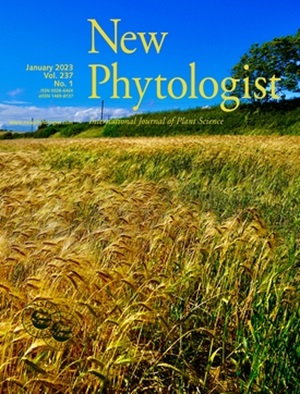Mixotrophy in orchids: facts, questions, and perspectives
IF 8.3
1区 生物学
Q1 PLANT SCIENCES
引用次数: 0
Abstract
While orchids germinate thanks to carbon from their symbiotic fungi, variable carbon exchanges exist between adult orchids and their mycorrhizal fungi. Although some truly autotrophic orchids reward their fungi with carbon at adulthood, some species remain achlorophyllous and fully dependent on fungal carbon (mycoheterotrophy). Others are photosynthetic but also import fungal carbon: The so-called mixotrophic (MX) orchids rely on fungi of diverse taxonomy and ecology. Here, we classify MX nutrition of orchids into three types. Type I mixotrophy associates with diverse Asco- and Basidiomycota that are either saprotrophic or ectomycorrhizal, entailing enrichment of the orchids in 2H, 13C, and 15N. The two other types associate with rhizoctonias, a polyphyletic assemblage of Basidiomycotas that is ancestrally mycorrhizal in orchids. Type II mixotrophy associates with rhizoctonias that secondarily evolved into saprotrophic or ectomycorrhizal ecology, and thus enrich the orchid in 2H, 13C, and 15N. Type III mixotrophy, which remains debated, associates with rhizoctonias that have retained their ancestral lifestyle, that is saprotrophic and/or endophytic in nonorchids, and only entail orchid enrichment in 2H and 15N. Based on a case study of achlorophyllous variants in Mediterranean Ophrys and on published data, we discuss the distinct nature and research perspectives of type III mixotrophy.兰花的发芽得益于其共生真菌提供的碳,而成年兰花与其菌根真菌之间存在着不同的碳交换。虽然有些真正自养的兰花在成年后会用碳来回报它们的真菌,但有些物种仍然是无叶绿素的,完全依赖真菌碳(菌根营养)。还有一些兰花具有光合作用,但也输入真菌碳:所谓的混合营养型(MX)兰花依赖于不同分类和生态的真菌。在此,我们将兰花的 MX 营养分为三种类型。第一类混养型与不同的Asco-和Basidiomycota(嗜渍或外生菌根的基生真菌)相关联,导致兰花的2H、13C和15N富集。另外两种类型则与根瘤菌有关,根瘤菌是一种多单胞的基枝菌纲集合体,其祖先是兰科植物中的菌根菌。第二类混合营养体与根瘤菌有联系,这些根瘤菌次生进化为吮吸或外生菌根生态,从而丰富了兰花的 2H、13C 和 15N 含量。第三类混合营养型(仍有争议)与根瘤菌有关,这些根瘤菌保留了其祖先的生活方式,即非兰科植物的嗜渍和/或内生生活方式,只导致兰科植物的 2H 和 15N 富集。基于对地中海鹅掌楸无叶绿素变种的个案研究和已发表的数据,我们讨论了第三类混养的独特性质和研究前景。
本文章由计算机程序翻译,如有差异,请以英文原文为准。
求助全文
约1分钟内获得全文
求助全文
来源期刊

New Phytologist
生物-植物科学
自引率
5.30%
发文量
728
期刊介绍:
New Phytologist is an international electronic journal published 24 times a year. It is owned by the New Phytologist Foundation, a non-profit-making charitable organization dedicated to promoting plant science. The journal publishes excellent, novel, rigorous, and timely research and scholarship in plant science and its applications. The articles cover topics in five sections: Physiology & Development, Environment, Interaction, Evolution, and Transformative Plant Biotechnology. These sections encompass intracellular processes, global environmental change, and encourage cross-disciplinary approaches. The journal recognizes the use of techniques from molecular and cell biology, functional genomics, modeling, and system-based approaches in plant science. Abstracting and Indexing Information for New Phytologist includes Academic Search, AgBiotech News & Information, Agroforestry Abstracts, Biochemistry & Biophysics Citation Index, Botanical Pesticides, CAB Abstracts®, Environment Index, Global Health, and Plant Breeding Abstracts, and others.
 求助内容:
求助内容: 应助结果提醒方式:
应助结果提醒方式:


